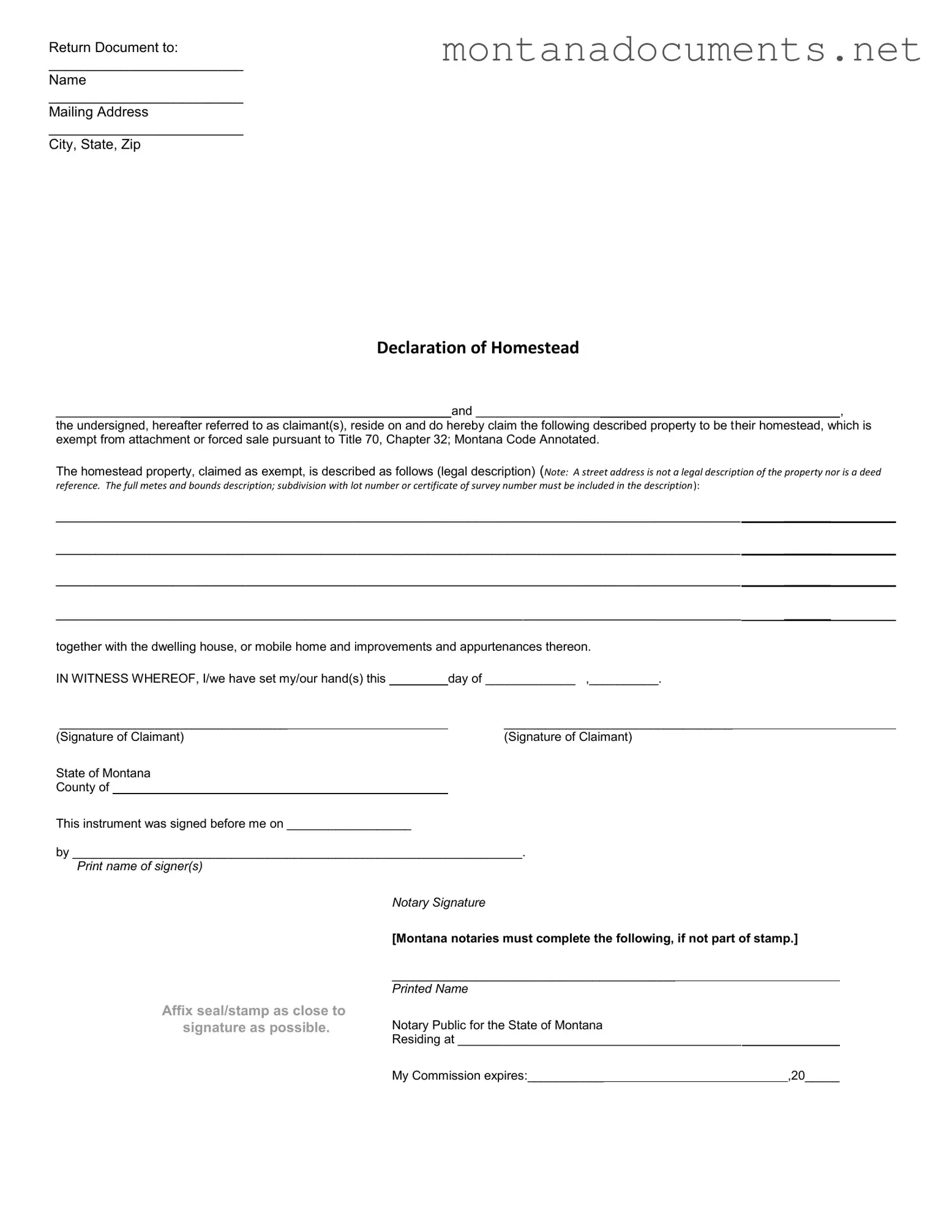Printable Montana Declaration Homestead Template
The Montana Declaration Homestead form is a legal document that allows residents to declare a property as their homestead. This declaration provides certain protections, making the property exempt from attachment or forced sale under Montana law. Properly completing this form is essential for homeowners looking to secure their rights and ensure their property is protected.
Access This Document Now
